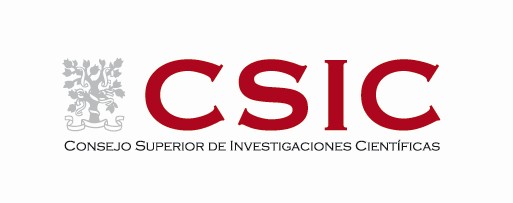Author: Arad Lang - Department of Materials Science and Metallurgy, University of Cambridge, 27 Charles Babbage Road, Cambridge CB3 0FS, UK.
When: May, 21 - 12PM
Where: Sala de Seminarios
Abstract
Two-dimensional hybrid organic-inorganic perovskites (2D-HOIPs) are a promising class of materials for optoelectronic applications. They all share the formula (RNH₃)₂BX₄, where R is a bulky organic group, B is a divalent metal (commonly Pb²⁺), and X is a halide. The inorganic ions form layers of corner-sharing [BX₆]⁴⁻ octahedra, separated by organic bilayers.[1] Weak interactions between the layers lead to melting at relatively low temperatures,[2,3] before decomposition, enabling solvent-free fabrication that may improve device performance[4].
By engineering the HOIP composition, crystallization can be suppressed upon cooling from a melt, resulting in the formation of a glassy phase.[5] These HOIP glasses belong to the hybrid glass family, distinct from traditional inorganic, organic, and metallic glasses. The most studied glass-forming HOIP is (S-NEA)₂PbBr₄ (S-NEA = (S)-(-)-1-(1-Naphthyl)ethylamine.[6] However, its glass is thermally unstable, reverting to its crystalline form with mild heating or over time at room temperature.[7]
In this talk, we will use X-ray diffraction and total scattering to explore the structural changes in (S-NEA)₂PbBr₄ that occur during vitrification, showing the loss of short-range order.[8] We will then discuss how its meltability and glass-formation ability allow us to apply classical melt-processing techniques such as melt alloying. We will employ a combination of structural, thermal, and functional analysis tools to highlight significant alterations in the physical properties of the resulting blends compared to the pure 2D-HOIPs,[9] and finally, demonstrate how such blending facilitates the formation of thermally stable HOIP glasses.[10]
References
[1] C. Huo, B. Cai, Z. Yuan, B. Ma, H. Zeng, Small Methods 2017, 1.
[2] T. Li, W. A. Dunlap-Shohl, E. W. Reinheimer, P. Le Magueres, D. B. Mitzi, Chem Sci 2019, 10, 1168.
[3] W. Wang, C. D. Liu, C. C. Fan, X. Bin Fu, C. Q. Jing, M. L. Jin, Y. M. You, W. Zhang, J Am Chem Soc 2024, 146, 9272.
[4] D. B. Mitzi, C. D. Dimitrakopoulos, J. Rosner, D. R. Medeiros, Z. Xu, C. Noyan, Advanced Materials 2002, 14, 1772.
[5] C. Ye, L. N. McHugh, C. Chen, S. E. Dutton, T. D. Bennett, Angewandte Chemie International Edition 2023, 62.
[6] A. Singh, M. K. Jana, D. B. Mitzi, Advanced Materials 2021, 33.
[7] A. Singh, D. B. Mitzi, ACS Mater Lett 2022, 4, 1840.
[8] C. Ye, L. N. McHugh, P. Florian, R. Yu, C. Castillo-Blas, C. Chen, A. Lang, J. Hou, D. A. Keen, S. E. Dutton, T. D. Bennett, Submitted 2025.
[9] A. Lang, C. Chen, C. Ye, L. N. McHugh, X. W. Chua, S. D. Stranks, S. E. Dutton, T. D. Bennett, J Am Chem Soc 2024.
[10] A. Lang, C. Ye, C. Chen, L. N. McHugh, E. V. Shaw, C. Dejoie, S. E. Dutton, T. D. Bennett, In preparation 2025.
Biography
Arad completed his double B.Sc. degree (materials science and engineering and chemistry) in 2017 at Technion. He then joined the Bio-Inspired Surface Engineering and Biomineralization Lab, led by Prof. Boaz Pokroy, as an M.Sc. student, and later continued in the same lab as a Ph.D. candidate. His Ph.D. thesis centered on the incorporation of organic molecules into synthetic crystals, and the effect of such incorporation on the physical properties of the hosts. After completing his Ph.D., Arad was awarded the Blavatnik Cambridge Postdoctoral Fellowship, and Joined the Hybrid Materials Group, led by Prof. Thomas D. Bennet, in the Department of Materials Science and Metallurgy at the University of Cambridge in the UK. His postdoctoral research focuses on the formation and properties of hybrid perovskite glasses.



